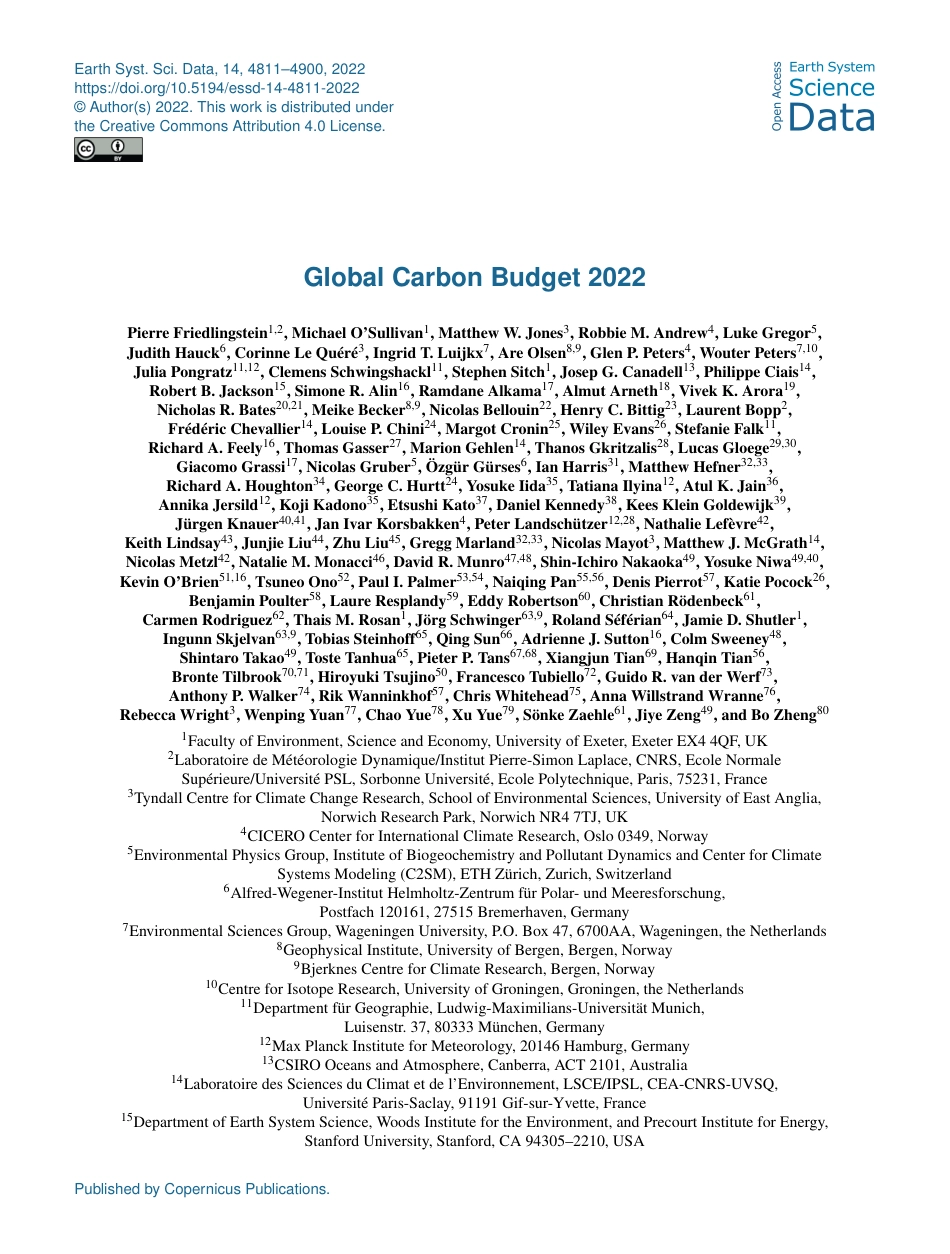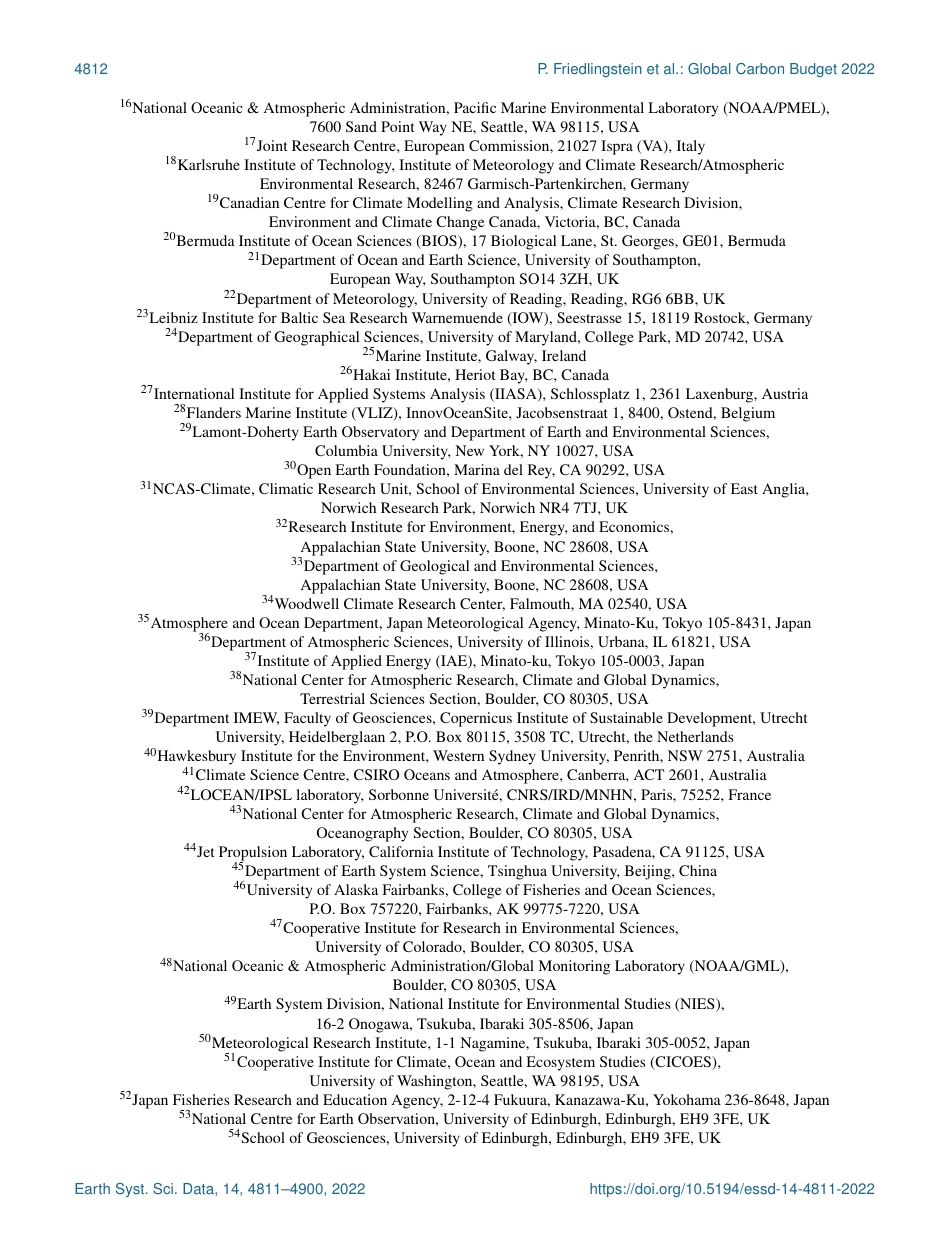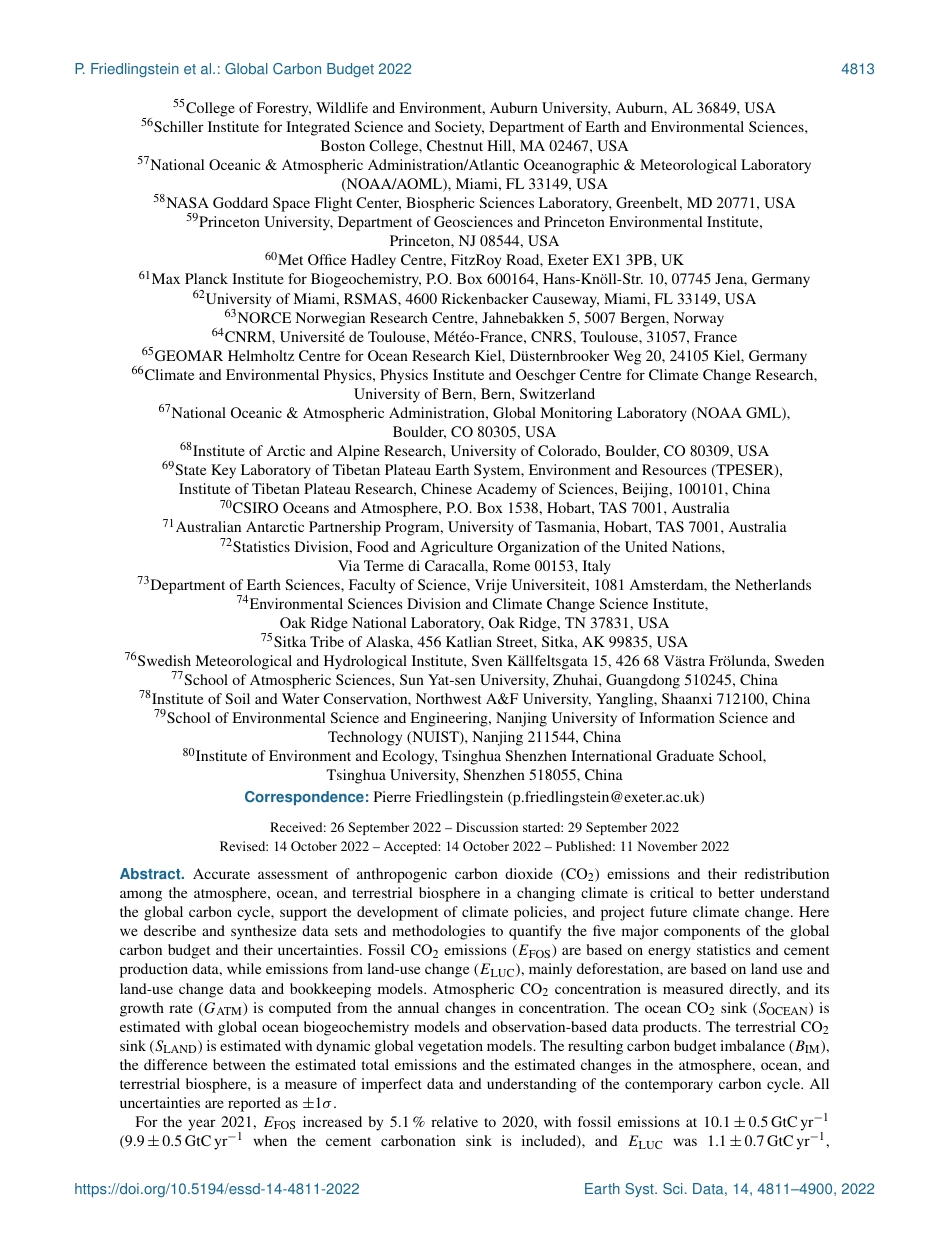Earth Syst. Sci. Data, 14, 4811–4900, 2022https://doi.org/10.5194/essd-14-4811-2022© Author(s) 2022. This work is distributed underthe Creative Commons Attribution 4.0 License.Global Carbon Budget 2022Pierre Friedlingstein1,2, Michael O’Sullivan1, Matthew W. Jones3, Robbie M. Andrew4, Luke Gregor5,Judith Hauck6, Corinne Le Quéré3, Ingrid T. Luijkx7, Are Olsen8,9, Glen P. Peters4, Wouter Peters7,10,Julia Pongratz11,12, Clemens Schwingshackl11, Stephen Sitch1, Josep G. Canadell13, Philippe Ciais14,Robert B. Jackson15, Simone R. Alin16, Ramdane Alkama17, Almut Arneth18, Vivek K. Arora19,Nicholas R. Bates20,21, Meike Becker8,9, Nicolas Bellouin22, Henry C. Bittig23, Laurent Bopp2,Frédéric Chevallier14, Louise P. Chini24, Margot Cronin25, Wiley Evans26, Stefanie Falk11,Richard A. Feely16, Thomas Gasser27, Marion Gehlen14, Thanos Gkritzalis28, Lucas Gloege29,30,Giacomo Grassi17, Nicolas Gruber5, Özgür Gürses6, Ian Harris31, Matthew Hefner32,33,Richard A. Houghton34, George C. Hurtt24, Yosuke Iida35, Tatiana Ilyina12, Atul K. Jain36,Annika Jersild12, Koji Kadono35, Etsushi Kato37, Daniel Kennedy38, Kees Klein Goldewijk39,Jürgen Knauer40,41, Jan Ivar Korsbakken4, Peter Landschützer12,28, Nathalie Lefèvre42,Keith Lindsay43, Junjie Liu44, Zhu Liu45, Gregg Marland32,33, Nicolas Mayot3, Matthew J. McGrath14,Nicolas Metzl42, Natalie M. Monacci46, David R. Munro47,48, Shin-Ichiro Nakaoka49, Yosuke Niwa49,40,Kevin O’Brien51,16, Tsuneo Ono52, Paul I. Palmer53,54, Naiqing Pan55,56, Denis Pierrot57, Katie Pocock26,Benjamin Poulter58, Laure Resplandy59, Eddy Robertson60, Christian Rödenbeck61,Carmen Rodriguez62, Thais M. Rosan1, Jörg Schwinger63,9, Roland Séférian64, Jamie D. Shutler1,Ingunn Skjelvan63,9, Tobias Steinhoff65, Qing Sun66, Adrienne J. Sutton16, Colm Swe...



